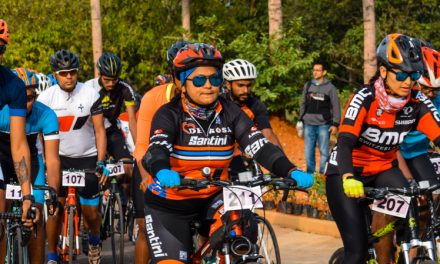
Dexter Manning Longboarder

Dexter Manning flies so fast and smooth it is often under the radar. Hailing from the middle east of Canada, Dexter has a classic Ontario skate resume from Club 54 to an ES patch and like many of the legends before him, all the skills despite none of the hills. Making regular skate trips to find the hills he craves, Dex even spent last year in BC making the most of the terrain, events and community. Dexter is never aiming to be in the spotlight. He’s humble, happy, funny and friendly. More often than not you’ll find Dexter on a speedboard, ripping hands down and taking as many runs as he can with the homies versus filming and chasing insta likes.
Traditional skateboards are great for ramps and tight turns and light weight makes them ideal for leaps and flips. However, the same features make them less stable and uncomfortable. Whereas, longboards are designed with transportation in mind and riders can cruise smoothly for miles on any smooth terrain.
Both longboards and skateboards are good for beginners, but from our research, we determined that a longboard is the ideal beginner board. Longboards are made for cruising, they are longer and give more stability when riding. … Longboards also have softer wheels than skateboards, which also allows them to cruise easier.
A longboard is a type of sports equipment similar to, but not the same as, a skateboard. It is often longer than a skateboard and has a wide variety of shapes. … Longboards are commonly used for cruising, travelling and downhill racing, known as longboarding, rather than skateboarding.
Longboarding is more dangerous than skateboarding, a new study suggests. BOSTON — People who skateboard using a type of board called a longboard may be at greater risk for severe injuries than those who use regular skateboards, a new study suggests.
Longboarding is all this and a lot more. But the question is how hard is it to learn how to longboard! …
Actually, longboarding is not very hard, especially for those who have previous boarding experience.
However, if you’re just a beginner trying to get the feel of being on a board, it takes some getting used to.
When asked about their helmet habits when riding in general, close to half of the longboarders say they always wear a helmet, while about 20% say they
usually do. A little under 20% rarely or never wear one. … Riding with kids
motivates riders to wear a helmet though.
Longboarding can be an extreme sport, and a potentially dangerous one when it comes to downhill speed. … Also, unlike traditional skateboarding, longboarding derives from the surf culture, in which kids, elderlies, and
everyone in between mingle seamlessly in the ocean.
For most beginners, a skateboard is a skateboard – but once you dive deeper into the types of boards that are out there, you’ll find out very quickly that the options exist for a reason. The type of board you choose can make your riding experience totally different, and depending on what type of riding you do, you may need a specific type. One type of skateboard that many beginners come across early is called a longboard.
How do you know if you should start with a longboard or a standard skateboard?
What Is a Longboard? What Is a Skateboard?
It can be confusing at first to define the terms since “skateboard” is a very generic term. Here’s a quick primer. The word “skateboard” is an umbrella term that covers all types of boards. A longboard is a type of skateboard, which is usually longer and shaped a little differently than what most of us picture as a standard skateboard. There are other differences between the two boards, but for the sake of defining terms, understand these basic definitions:
• A longboard is a variation of skateboard. These vary in length, but are frequently as long as 51 inches. The shape of the nose and tail is the biggest giveaway that a board is a longboard – on a longboard, these are flat.
• A standard skateboard, in this article, is the type of board you could pick up at any sporting goods store, with a standard length of 36 inches. On a skateboard, the nose and tail curve up to allow the rider to do tricks.
Now that you know what we mean by each term, let’s dive into what makes each board style unique, some of the pros and cons of each board, and which you should choose for your skill level and desired riding style.
Pros and Cons of a Longboard
Longboards come in a variety of lengths, even, confusingly enough, in lengths that are shorter than a standard skateboard. You can get a longboard as short as 28 inches, and as long as 59 inches. The shape of the nose and tail also come in a variety of options, including:
• Pintail: This is a longboard with a blunt nose and a pointy tail.• Speedboard or Topmount: These boards
usually are pointier on both ends.• Cruiser: These boards have rounded noses and tails.
• Freestyle or Freeride: These boards come in a variety of unique shapes. The two most common subtypes of each of these styles are called drop down and drop through boards.
In addition to the shape, longboards also have other factors that you can choose from, such as how flexible they are, and the shape of the wheels. Round wheels are better for speed, while square wheels are better for straight cruising.
And here’s where it can get even more confusing. While the biggest difference between a longboard and a skateboard is the fact that skateboards have a curved edge for tricks, there are actually longboards with a raised edge called a lick tail, which can allow advanced riders to do tricks on their long board.
The pros and cons of a longboard include:
• PRO: Longboards offer a lot of variety, allowing you to cruise, commute, race, carve, and even do tricks.
• PRO: Longboards are easier to balance, and offer more room for bigger feet.
• CON: Longboards are heavier and bulkier.
• CON: Longboards are often more expensive, even for a basic beginner model skateboard.
Pros and Cons of a Skateboard
Skateboards typically come between 28 and 36 inches long, and have a curved edge on both the nose and the tail. This allows the rider to kick the board to do tricks as they ride. Many shops called the standard skateboard a “shortboard”, for obvious reasons.
The parts of a skateboard include:
• The deck, which is the board. This should be made of high quality materials, such as
Canadian maple or bamboo. You can also find aluminum and fiberglass decks that are light and may be better for tricks. Additionally, there is a type of skateboard called a pennyboard that is made of plastic.
• The trucks connect the wheels to the deck. These should be made of metal, not plastic.
• The wheels should be urethane for the best quality, which usually has a translucent quality. If the wheels are plastic or rubber, they won’t last as long.
• The bearings, which allow the wheels to spin. Be sure to ask the ABEC rating for the bearings, which is a measurement that determines how precisely they spin the wheels. An ABEC rating of either five or seven is ideal.
A general rule of thumb for choosing a quality skateboard is to avoid plastic wherever you can. Spin the wheels before you buy, checking for wobbly spinning or the sound of grinding. The wheels should
always spin freely and without a lot of noise.
Most buyers purchase their first skateboard as a complete board, ready to ride out the door. However, as you get more advanced in the world of skating, you’ll likely start looking into build-your-own skateboards. This allows you to purchase the deck, wheels, trucks, and bearings you want, and assemble those pieces together in your own dream skateboard set up. For a beginner, however, this could be a bit too complicated.
Some of the pros and cons of a traditional skateboard include:
• PRO: They are convenient to carry. Skateboards are small, lightweight, and can be strapped to a backpack, stored in a school locker, and carried onto a bus.
• PRO: Skateboards tend to be more affordable for beginners and those who want to learn tricks.
• CON: Skateboards can’t be locked up. Unlike a bike or a scooter, you pretty much have to keep your skateboard on you to prevent it from being “borrowed”.
• CON: Skateboarding can damage your shoes. Because you’ll be doing a lot more kicking, and because the grip tape on a skateboard is different than the surface of a longboard, your skate shoes will likely get torn up faster on a skateboard.
Which Board Is Best for Beginners?
There are a lot of opinions about which type of board is best for beginners. Some skaters will say that the best one to start with is the one that is the most common, and therefore the easiest to get – and for most skaters, that will be the standard skateboard.
However, if you are concerned about not being able to balance on a board, and you want something that will do a lot of the work for you, the longboard is actually the better option for beginners. These are made for smooth, easy riding, and have a lot of stability because of their wider and longer design. The wheels are usually more robust, which means less chances of you tipping over, and because these aren’t made for tricks, parents of beginners won’t have to worry about their kids attempting crazy jumps and flips too early.
That being said, the longboard is heavier, which may make it harder for a young rider to control. So for an adult beginner, try a longboard. For a young beginner, try either a standard skateboard, or a shorter longboard.
Which Is Best for Intermediate Skaters?
If you aren’t really a beginner, but you aren’t exactly advanced either, then you’ll probably want to choose your board based on what kind of riding you want to do. For example, if you want to cruise, race downhill, carve around sweeping curves, or ride around on sidewalks, you’ll want a longboard.
If you want to hang out at the skate park, do a lot of tricks, and maneuver through tight or crowded spaces, you’ll want a traditional skateboard.
At this stage, it’s more important that you choose a board of great quality that will help you increase your skills. Consider what it is you want to work on more. Want to get better at tricks and balance? Go with a skateboard. Want to get better at speed and control? Go with a longboard.
Which Is Best for Advanced Skaterboards?
For advanced skaters, the sky is the limit. Of course, the standard skateboard gives you more versatility because you can ride on rails and ramps, do tricks, and cruise. Choosing a longboard is typically for one of two reasons at this stage: either you love the aesthetic of the longboard, or you want to enjoy some serious cruising and downhill speed.
There are longboards that are made for trick riding, and because of their weight and unique shape, they are better suited to advanced riders. Most advanced riders who are heavy into this sport, even as a hobby, will have both types of boards, especially if they frequently get around on their boards.
Which Skateboard Is Safer?
Whether you are a parent worried about a child skater, or you are a beginner yourself and want to protect yourself, safety is an important thing to consider. There is always a risk no matter what type of board you are using.
At first glance, you’d think that longboards are safer since they aren’t made for doing tricks. Longboards offer the most safety for downhill and fast skating, since that’s what they are designed for. However, if you want to do tricks, the skateboard is actually safer, since that’s what it was designed for. Skateboards aren’t really meant for long-term balancing, so for commuting or getting around town, a longboard is actually safer.
Longboards aren’t really made for hanging around the skate park, so in that situation, they would
be more dangerous.
The safety, in other words, is determined by the activity, just like every other aspect of these two boards. For safer, fast riding and commuting, go with a longboard. For safer trick riding and riding in tight spaces, go with a skateboard. And of course, be sure to wear a helmet and other protective gear to prevent injuries.
Still not exactly sure what board you want? With the many pros and cons of each type of board, it can be hard to choose. Here’s a quick way to choose between a longboard and a skateboard at a glance:
If you want to…
• Ride for long distances
• Use your board to commute
• Cruise leisurely around on sidewalks or in the park
• Gain some serious speed as you cruise
• Ride a board even if you don’t have great balance …then you need a longboard. Invest in a high quality board to prevent accidents.If you want to…
• Perform tricks on ramps, rails, and skate park equipment
• Increase your skills in balance, agility, and trick riding
• Ride a board that is highly agile for tight turns, weaving, and riding in more compact areas
…then you need a skateboard. Go to an actual skate shop, not a sporting goods store, and let the staff help you choose a quality skateboard.
In Summary
Summarizing the longboard vs. skateboard
debate isn’t easy. Both boards offer a lot of pros and cons, and both boards are ideal for different types of skating. For the most part, the choice will boil down to your skill level and what type of
skating you want to do.
However, it’s always a good idea to understand the options before you choose. Longboards are typically longer, with unique tail shapes that most often sit flat, and robust wheels for stability.
Skateboards are typically smaller, with curved edges that help riders do tricks, and usually have more maneuverability in the trucks and bearings to aid with trick riding.
Both types can work for beginners, though kids may be more comfortable on the smaller, lighter
skateboard. Intermediate and advanced riders will want to choose the board based on the type of riding they want to do, or the skills they want to improve.
Now that you know all about skateboards and longboards, you can choose the board that works best for you.
Source: thrillappeal.com / images.app.goo.gl












